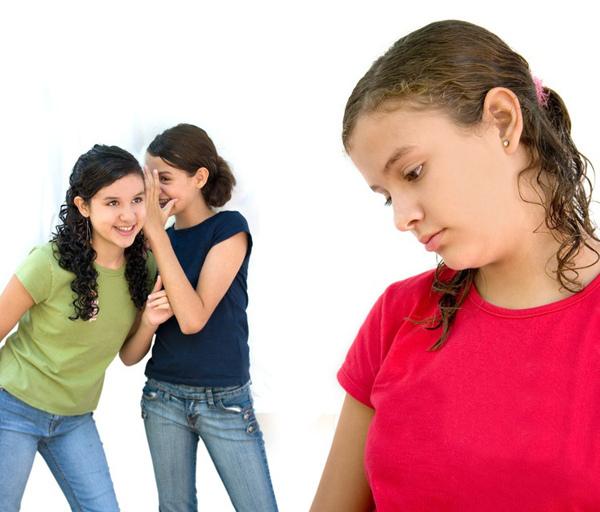Teasing isn’t pleasing

“two young girls laughing behind another girls back” photo + subtext courtesy of Wikimedia Commons
Even though teasing seems fun, it can be dangerous and can build anxiety in a student from a young age, which, in turn, can affect their potential in middle and high school. The effects that teasing have on a student are mostly mental, such as a possible creation of a fear to build friendships. Continuous joking can eventually turn into bullying, becoming physically harmful for the victim.
Teasing is meant to be playful and harmless, but depending on the severity, it can quickly switch to dangerous. Schools attempt to inhibit the spread of bullying through outdated prevention videos with basic, textbook bullying situations that aren’t common in the real world. Usually, in real life, the situation is a more complex and personal. An example of this is teasing done by friends, which is seemingly friendly and harmless, such as jokes about sensitive subject to the victim. This begs the question—what is the limit?
Some say that the consequences of teasing are blown out of proportion, and that there is a clear difference between bullying and jokingly teasing friends. From this reaction, it can be asked whether or not they can see the limit clearly, or if they go too far with their own “jokes” with their friends.
When the topic of teasing or bullying is brought up, the spotlight is usually put on the victim, which is affected the most. Kids that are teased from a young age have subconsciously received most of the negative effects that teasing can have, which are symptoms such self-consciousness, aggressiveness or defensiveness and distancing themselves from others. Effects such as these have a possibility to haunt the victim for a majority of their life. In extreme cases, the effects can stay with them for the rest of their life.
Teasing isn’t just harmful for the victim; it can also affect the teaser negatively. The student who is teasing the victim can get used to insulting others, which creates a possibility of them being mean or violent to their future family. Most of the effects that teasing or bullying has on the “bully” are long term, according to Masters In Psychology Guide. Bystanders are also negatively affected, due to the situation making them feel guilt or helplessness.
Bullying can be prevented by, at least, toning the intensity of teasing down, convert teasing back into friendly jokes and decrease the repetition of the insults. Some teasing is actually positive to the student, and if students kept their jokes to positive level, there wouldn’t be much talk of the extreme cases that have occurred due to bullying. Another way to prevent teasing from having a negative effect is to make sure the person getting teased understand the joking manner that comes with teasing. With just a little effort to consider the feelings of others, situations such as dysfunctional families can be prevented, more problems can be solved, students can focus on their academic work rather than how their friends make them feel with their jokes and lives can be saved.








